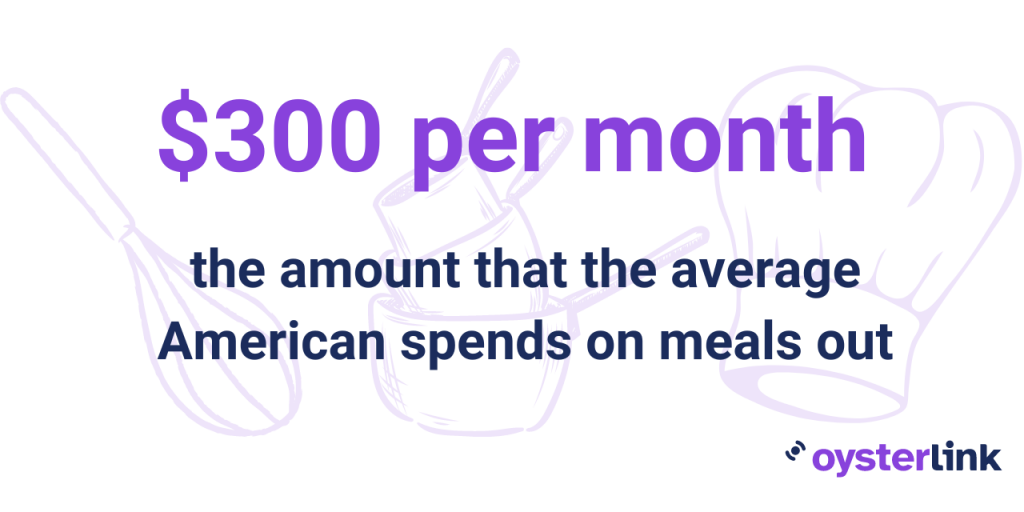If you find the process of managing a restaurant challenging and are looking for some restaurant management tips, you’ve come to the right place.
Whether you’re an established restaurant owner or manager or aspiring to become one, managing a restaurant is daunting and will require you to be on top of your game. Effective restaurant management involves everything from overseeing daily operations to maintaining customer satisfaction, making it critical for success.
That is why we created this guide. Use it to learn some of the top restaurant management tips and improve the establishment’s operations and bottom line.
Top 10 Restaurant Management Tips
Below are 10 restaurant management tips to help the your restaurant business succeed.
Explore them and learn restaurant operations tips to manage your establishment in the most efficient way.
1. Set Clear Expectations
The success of a restaurant boils down to effective planning and communication.
When assessing the operations of your restaurant, you want to anticipate needs or any challenges that may arise. Consequently, you need to plan contingencies and ensure that all your team members know what is expected of them.
As part of your approach to effective restaurant management, clearly communicate what each of your employees is supposed to do in all situations and show them how they can achieve the desired results.
In doing so, you will ensure smooth restaurant operations that can go on uninterrupted regardless of what is happening.
2. Create a Positive Work Environment
It is the job of your front-of-the-house employees to, among other things, ensure the highest level of customer service.
While restaurant Servers can deliver food and make recommendations, they should also be pleasant and happy when they do so.
Fostering a positive environment is a crucial element of effective restaurant management as it helps boost morale and productivity.
The best way to achieve this result is to make your employees feel valued and heard.
Encourage open communication and give your employees a chance to voice their concerns and ask questions. Provide them with constructive criticism and make sure that they learn from one another.
By creating such an open and positive environment, you will ensure that your employees are happy and represent your restaurant in the best possible way.
3. Focus on Your Staff and Develop Career Growth Opportunities
In the restaurant industry, having a 75% employee turnover rate is a good benchmark to have. This means that your employee turnover rate shouldn’t go higher than 75%.

[Source: SynergySuite ]
The data suggests that your core employees will remain while less experienced employee who came to the restaurant more recently will leave (or underperform and be asked to leave).
Providing competitive benefits and focusing on staff retention is one of the key restaurant manager tips for reducing turnover rates and fostering a loyal team.
Either way, high turnover rates can lead to costly rehiring and training or will lead to your staff being overburdened.
That is why you want to reduce the turnover rate as much as possible: You can include competitive benefits packages and salaries, training and career development opportunities.
In doing so, you will show your staff that their well-being and advancement is a priority, effectively reducing the turnover rates.
4. Regularly Review and Update the Restaurant Menu
The average American spends about $300 per month on eating out.

[Source: Ramsey Solutions ]
Staying up to date with industry trends and offering your patrons interesting and delicious menu options is a sure way to increase the number of your restaurant visitors.
One of the most effective restaurant operations tips is to keep track of which dishes sell best during specific seasons and plan your menu accordingly: Offer different seasonal menus with an emphasis on fruits and/or vegetables that are in season.
Consequently, if you notice that particular items on your menu sell better than others, lean into it and offer your patrons similar options.
5. Plan Ahead
Effective restaurant management requires proactive planning.
Anticipating challenges before they arise can save time, money and stress in the long run.
That’s why you should focus on:
- Budgeting: Monitor your restaurant expenses and prepare for slow seasons and busy periods accordingly.
- Inventory: Keep track of items that you have in your inventory and make sure not to order too much or too little of a particular item.
- Scheduling: Anticipate busy periods and schedule staff accordingly. Ensure you have enough staff during peak hours without overstaffing during slower times.
6. Gain Hands-On Experience in Various Roles
The better you understand your business, the better you will be prepared for any issues that may arise.
Spending time in different roles is a valuable restaurant manager tip that enables you to connect with employees and understand operations from different perspectives.
Talk to your employees and familiarize yourself with the kitchen operations and how the Servers go about taking the food out and interacting with customers.
Consequently, you will know what potential issues may arise and you will be better acquainted with making suggestions on how to resolve a particular issue.
7. Prioritize Customer Satisfaction
Keeping your customers happy is the lifeblood of any successful restaurant. Think about it: When you (as a customer) have a great dining experience, you’re more likely to return and tell your friends and family about it.
But when you have a bad experience, you might not come back and you’ll probably warn others to stay away.
Customer satisfaction is at the heart of effective restaurant management. The first step is to properly train your front-of-house staff.
Teach them to be friendly, attentive and efficient. Make sure they understand that every customer is important and deserves to feel special.
A little personalized service goes a long way — things like remembering a regular’s favorite drink or quickly fixing an issue without the customer having to ask.
8. Delegate
Delegating tasks is beneficial to your restaurant for several reasons:
- It shows your employees that you trust them.
- It allows you to focus on the most pressing tasks at hand.
- It alleviates some of the pressure you’re experiencing.
Aside from the above benefits, your employees will likely be more satisfied knowing that you trust them to get the job done. Delegation is a core aspect of managing a restaurant effectively. In turn, this could positively influence employee satisfaction rates.
Just make sure to not overburden your employees and lead them to burnout.
9. Utilize Technology
Use software that will help you better manage your restaurant operations. This includes point-of-sales systems, staffing technologies and inventory management systems.
You can explore some of the software options to help you manage a restaurant on our Kitchen Management strategies guide.
10. Celebrate Success
Celebrating employees’ achievements is essential for fostering a motivated and engaged team in your restaurant. Whenever you reach a significant milestone — be it hitting a sales target, receiving positive customer feedback or successfully navigating a busy season — it’s important to take a moment to acknowledge and celebrate these successes.
Recognizing the hard work and dedication of your staff not only enhances morale but also strengthens a positive workplace culture.
When employees feel appreciated for their efforts, it encourages them to maintain high levels of performance and commitment.
Who Is Involved in Restaurant Management?
It takes a village to manage a restaurant properly.
There are several key roles that ensure the proper management of a particular establishment and the main ones are:
- Restaurant Owner: The Restaurant Owner is the first person responsible for proper management. They can be hands-on and involved in daily restaurant operations. Otherwise, they can delegate the management to the team, usually consisting of a Restaurant Manager and a Head Chef.
- Restaurant Manager: The Manager is responsible for overseeing all operations of the restaurant to which they’re assigned. This can include inventory, staffing, schedules, customer service and more.
- Head Chef: A Head Chef (or alternatively, a Kitchen Manager) is responsible for overseeing kitchen operations. This includes menu development, food preparation, sanitation standards, inventory and more, depending on the size of the restaurant.
Conclusion
While managing a restaurant is not easy, using the above restaurant management tips can help you navigate tasks and improve your establishment’s operations.
By setting clear expectations, fostering a positive work environment and properly training your staff, you can anticipate and quickly address all issues that may arise.
FAQs About Restaurant Management Tips
To strike the proper balance between customer and employee satisfaction, you should properly train your staff and keep them happy with their job.
If your employees feel valued and appreciated, they will be more motivated to go above and beyond for each patron and deliver exceptional (or even personalized) customer service to regulars.
Additionally, you should go through customer reviews and incorporate feedback from both employees and customers. This will demonstrate your commitment to both employee and customer satisfaction.
Yes, being proactive is an important step in restaurant management.
You can actively track your inventory and staffing schedule and anticipate slow and busy schedules.
Doing so ensure that you have all the items you may need while also never having to worry about too many or too few employees working on the restaurant floor.
Some of the common restaurant management mistakes are:
- Poor financial planning
- Lack of employee training
- Poor communication
- Failure to incorporate guest feedback
- Inability to adapt to dining trends
- Poor inventory management
- Lack of marketing efforts




